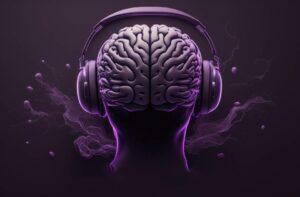Neural pathways, also known as neural circuits or neural networks, are interconnected chains of neurons that transmit information throughout the nervous system. These pathways are responsible for facilitating various cognitive, sensory, motor, and autonomic functions in the body. Neural pathways can be simple, involving just a few neurons, or highly complex, containing millions of neurons.
Neurons transmit information through electrical and chemical signals, using specialized structures called synapses. These signals, called action potentials, travel along axons and propagate from one neuron to the next, ultimately resulting in a specific response or action. Over time, neural pathways can change and adapt through processes such as synaptic plasticity, learning, and memory formation.
Neural pathway
Neural pathways facilitate communication between different regions of the brain and the rest of the nervous system, enabling a wide range of functions, including:
Sensory processing: Neural pathways transmit information from sensory receptors (e.g., eyes, ears, skin) to the brain for interpretation and response.
Motor control: Neural pathways transmit signals from the brain to muscles, enabling movement and coordination.
Autonomic regulation: Neural pathways control involuntary functions, such as heart rate, breathing, and digestion.
Cognitive functions: Neural pathways underlie various cognitive processes, such as memory, attention, decision-making, and emotion.
Neural pathways develop and change over time through several processes:
Neurogenesis: The formation of new neurons, primarily occurring during prenatal development and, to a lesser extent, in specific regions of the adult brain.
Synaptogenesis: The formation of new synapses between neurons, allowing for the establishment and strengthening of neural connections.
Synaptic pruning: The elimination of weaker or unused synapses, refining neural circuits and improving their efficiency.
Neural plasticity: The ability of the brain to adapt and reorganize its neural pathways in response to experience, learning, or injury. This includes processes such as long-term potentiation (LTP) and long-term depression (LTD), which alter synaptic strength based on patterns of neural activity.
Yes, neural pathways can be consciously altered or improved through various methods, including:
Learning and practice: Engaging in new activities, skills, or mental exercises can strengthen existing neural pathways and form new connections in the brain.
Cognitive training: Participating in cognitive training exercises, such as memory, attention, or problem-solving tasks, can enhance neural pathways associated with specific cognitive functions.
Mindfulness and meditation: Practicing mindfulness and meditation has been shown to promote neural plasticity, potentially improving emotional regulation, attention, and other cognitive functions.
Physical exercise: Engaging in regular physical activity has been linked to increased neurogenesis and synaptic plasticity, potentially benefiting cognitive health and overall brain function.
Brain stimulation: Techniques such as transcranial magnetic stimulation (TMS) or transcranial direct current stimulation (tDCS) can modulate neural activity and plasticity, potentially improving specific cognitive functions or aiding in recovery from brain injury.
Related Semantic Entities for Neural pathway


